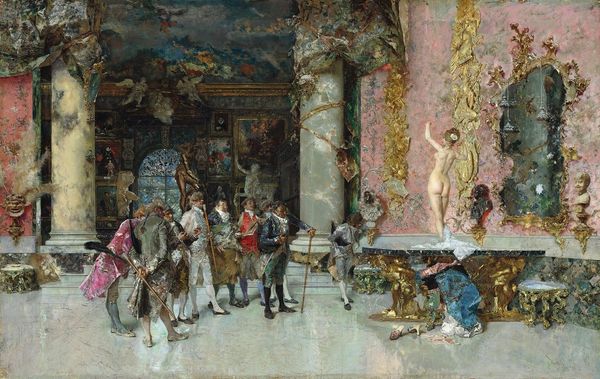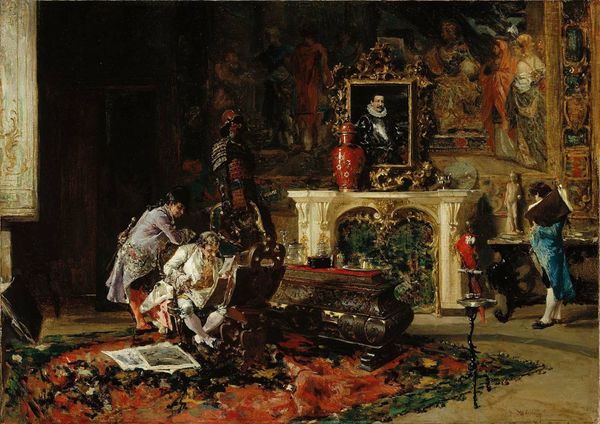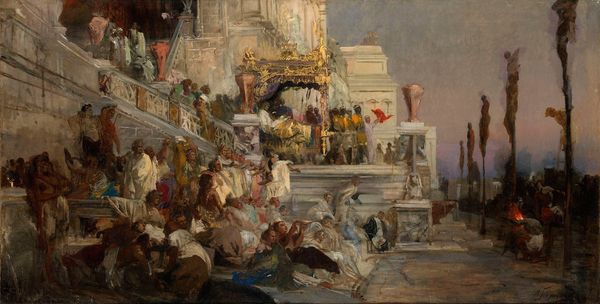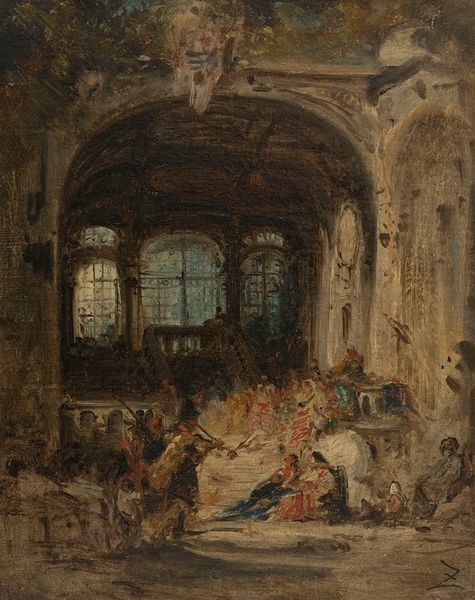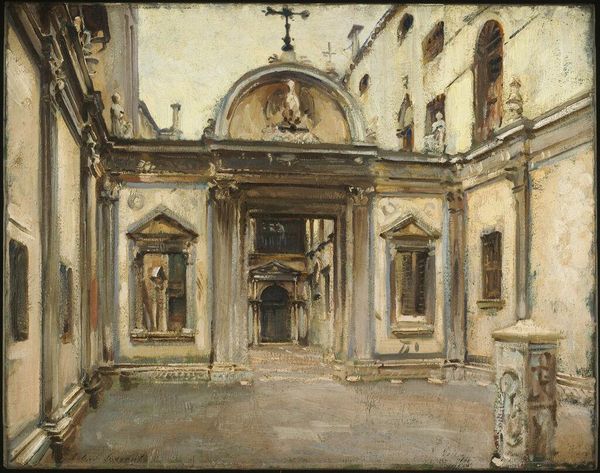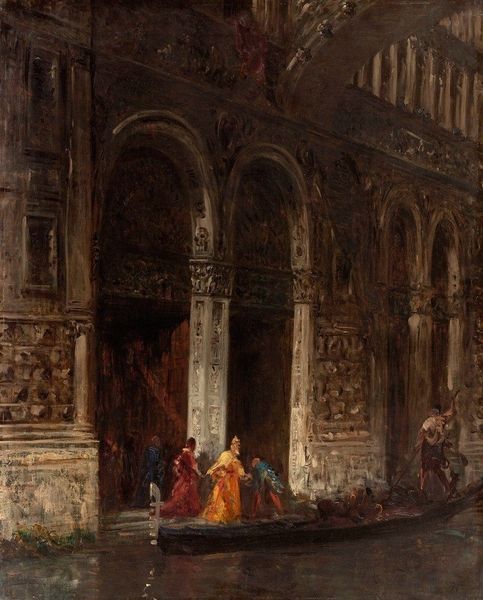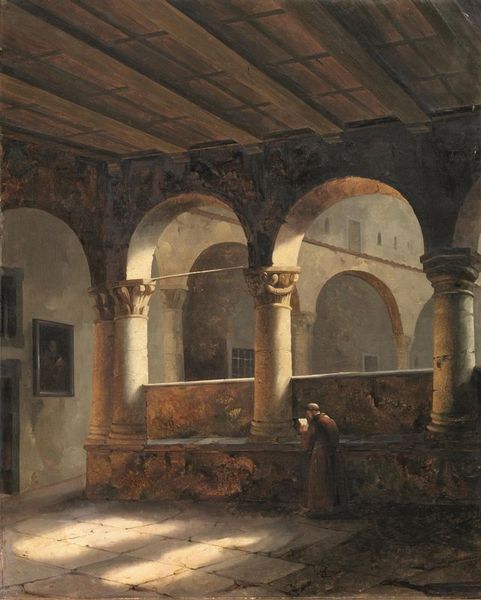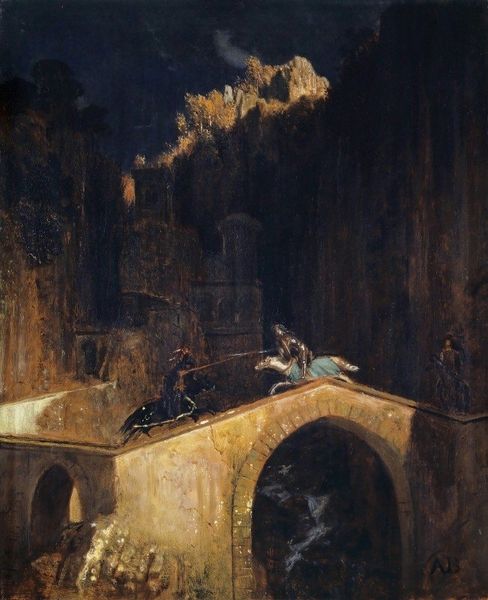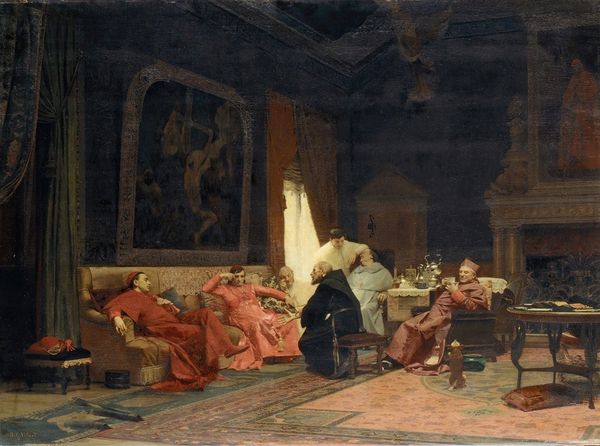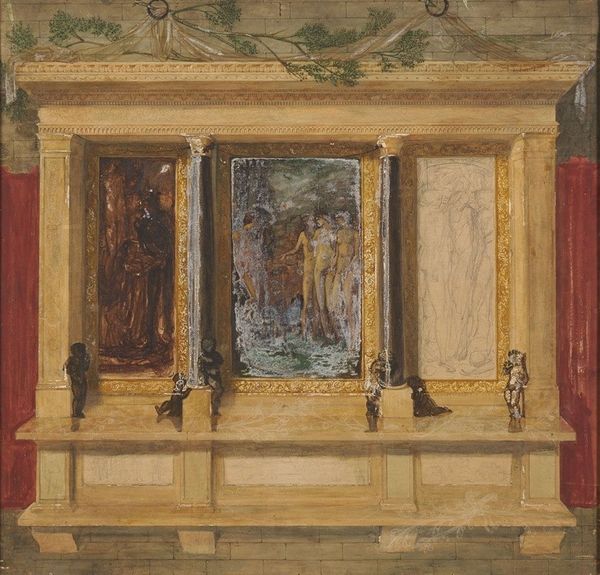
#
figurative
#
sculpture
#
painted
#
possibly oil pastel
#
oil painting
#
derelict
#
underpainting
#
urban art
#
painting painterly
#
mixed media
#
watercolor
Copyright: Public Domain: Artvee
Editor: We're looking at "The Slaying of the Abencerrajes" by Mariano Fortuny Marsal, painted around 1870. It looks like it's possibly an oil painting. The scene is quite dark and violent, but there's an undeniable beauty to the architecture. What’s your interpretation of this work? Curator: This painting speaks volumes about the politics of Orientalism in 19th-century European art. Fortuny, like many of his contemporaries, was fascinated by Moorish Spain, but his portrayal of this historical event—the massacre of the Abencerrajes family—reflects a complex mix of exoticism and historical narrative. How do you see the setting influencing your reading of the event? Editor: The Alhambra palace makes it seem both grand and tragic. It's almost like the beautiful setting amplifies the horror of what happened there. Do you think that Fortuny was trying to make a political statement? Curator: Absolutely. The choice to depict this particular event, the meticulous detail of the architecture, all point to a deliberate construction of a narrative about power, conquest, and the clash of cultures. The painting operates on several levels – historical representation, artistic exploration, and implicitly, a commentary on contemporary European imperialism. What purpose did the politics and imagery have for the viewer? Editor: It’s a bit unsettling knowing that the artist might have been using this tragic historical event to make a statement about something happening during his time. Curator: Precisely. By examining art like this through a historical lens, we can uncover these layers of meaning and better understand its impact on the culture of its time and its continuing relevance today. Editor: I hadn’t thought about how political paintings of historical events could be. I’ll definitely look at paintings differently now!
Comments
No comments
Be the first to comment and join the conversation on the ultimate creative platform.
